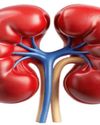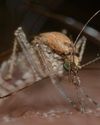Can CRISPR technology help to feed the India?
Scientific India
|November - December 2019
The way world is moving towards technology, time is not far that we will totally indulged into artificial complex lifestyle full of health complexities.
-

Hidden hunger is an alarming global tsunami and controlling this in any manner is an affordable opportunity to improve the lives of more than half of the world population especially developing countries (UNICEF report, 2017). New developments are leading to rising carbon levels making food less nutritious which brings nutrition crisis. In the current scenario, the paradox is while the number of undernourished people has gone down by one-third in the last decade, but the malnutrition is increasing to an alarming ratio and this could be related to the increase in Co2 level.
Hunger around the world is rising again, high CO2 level is jeopardizing the progress made to end the scourge of food insecurity. Why rising carbon levels are bad for Indians as it is making rice and wheat less nutritious, putting millions at risk of malnutrition. The antinutritional effects and environmental implications has instigated numerous studies and aimed at how to stabilize the plant nutrition. Gene editing is the need to solve this incumbency of nutrition.
Currently India is well poised to become the third largest economy in the coming decades though it is still notorious for being undernourished facing the major challenge of hidden hunger. Although we boast that India is set to become the youngest nation by 2020 with a huge workforce of 64%, the reality is the hidden hunger, which may be due to the rising carbon dioxide (CO2). The time is come where we have to address the nutrition security than the food hunger. High carbon dioxide leads to lower concentration of protein, iron, and zinc in the crops. Cereals and lentils are most affected if grown under polluted environment. In India millions of people are facing nutritional deficiencies because of rise in carbon dioxide. Rising carbon dioxide making staple food such as rice and wheat less nutritious.
Dit verhaal komt uit de November - December 2019-editie van Scientific India.
Abonneer u op Magzter GOLD voor toegang tot duizenden zorgvuldig samengestelde premiumverhalen en meer dan 9000 tijdschriften en kranten.
Bent u al abonnee? Aanmelden
MEER VERHALEN VAN Scientific India
Scientific India
Japanese physicists were the first to measure the most tolerant entanglement state, the W state
There are many unusual things that happen in the world of quantum physics.
3 mins
September - October 2025

Scientific India
The Fifth Force: Could It Unlock the Secret of Dark Matter?
What if the universe is powered by a force we've never seen before? For centuries, science has explained nature with four fundamental forces.
3 mins
September - October 2025

Scientific India
A flu test you can chew
As flu season nears in the northern hemisphere, scientists are exploring a surprising new way to detect infection: through taste.
1 mins
September - October 2025

Scientific India
Lab-Grown Kidney Brings Artificial Organ Dream Closer to Reality
In a major leap toward bioengineered organ replacement, scientists have successfully grown human kidney 'assembloids' in the laboratory that mimic key structural and functional features of natural kidneys.
1 min
September - October 2025

Scientific India
Your pumpkin might be hiding a toxic secret
Pumpkins, squash, zucchini, and other members of the gourd family have a surprising trait: they can take up pollutants from the soil and store them in their edible parts.
1 mins
September - October 2025

Scientific India
2025 Nobel Prize in Physics Reveals Quantum Secrets in Superconducting Circuits
The 2025 Nobel Prize in Physics has been awarded to John Clarke, Michel H. Devoret, and John M. Martinis for their pioneering experiments that brought quantum mechanics from the invisible atomic world to the macroscopic scale a system large enough to hold in your hand.
1 mins
September - October 2025

Scientific India
Genomic Evidence Redefines the Evolutionary Age of Mosquitoes
A new genetic analysis has shaken up what we thought we knew about one of humanity's most notorious pests the mosquito.
1 min
September - October 2025

Scientific India
Nobel Prize in Chemistry 2025: Building Molecular Architectures with Room to Breathe
In a scientific breakthrough that bridges molecular design with planetary-scale problems, the 2025 Nobel Prize in Chemistry has been awarded to Susumu Kitagawa, Richard Robson, and Omar Yaghi.
1 mins
September - October 2025

Scientific India
Guardians of Immunity: Nobel Prize 2025 Honors Discoveries that Keep the Immune System in Check
The 2025 Nobel Prize in Physiology or Medicine has been awarded to Mary E. Brunkow, Fred Ramsdell, and Shimon Sakaguchi for their groundbreaking discoveries in the field of peripheral immune tolerance a crucial mechanism that prevents the body's immune system from turning against itself.
1 mins
September - October 2025

Scientific India
'Is cold nuclear fusion feasible?
In early May 1989, two chemists from the University of Utah, Pons and Fleischmann, arrived in Washington, U.S.A. The aim is to present their findings to members of the US Congress.
3 mins
September - October 2025
Translate
Change font size

